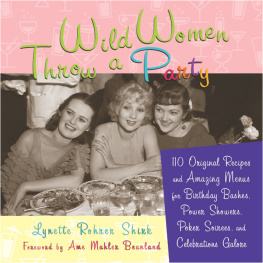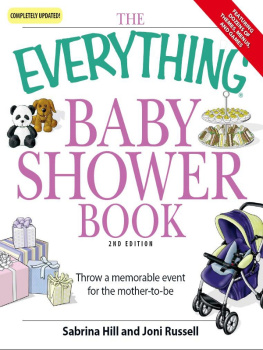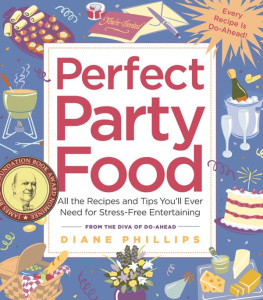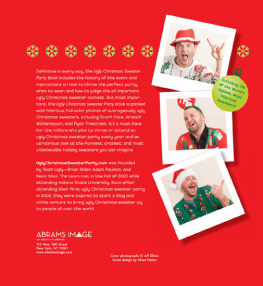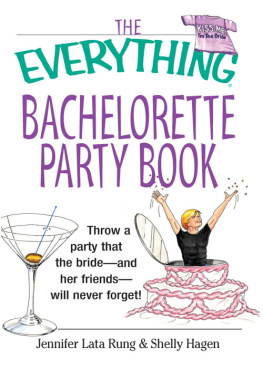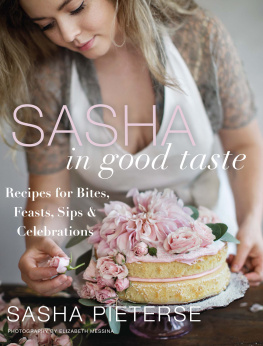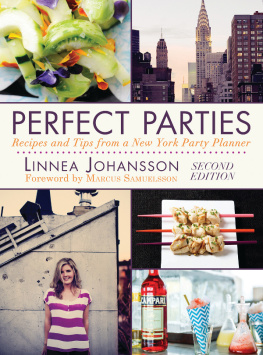Acknowledgments
I would like to thank my husband Jeff and my daughter Zelda for their love and patience as I worked on this book.
Thank you to Batavia McFarlin (Mrs. B) and Izumi Kajiyama (Ms. Izumi) at the Children's Courtyard in Lewisville, Texas, for caring for my daughter.
Thank you to Brenda Knight and Jan Johnson at Red Wheel/Weiser/Conari for making this book possible. Thanks also to my wonderful editors, managing editor Caroline Pincus and copyeditor Wren Bernstein.
Thank you to my family: Mary Ellen and Fred Pilgrim, Howard Cline, Nancy Violette, Karen Cline-Parhamovich, Florence and Joseph Metzendorf, and Irene and Stanley Cline for everything that shaped me growing up.
Thank you to my great-grandmother, Katie Metzendorf, for inspiring me with her garden full of beets, peppers, and tomatoes and her kitchen full of homemade strudel, kolachi, and wax bean soup.
Thank you to Pastry Chefs Lindsey Shere and Mary Jo Thoresen, who gave me the opportunity to learn at Chez Panisse when I was a newly transplanted Buckeye in San Francisco; and Alicia Toyooka, whose perfect confections are an inspiration.
Thank you to Chef Derek Burns who took me on several culinary odysseys, including opening a restaurant on Nob Hill, running the galley of a dining yacht on San Francisco Bay, and cooking in the hallowed kitchen of James Beard in New York City.
Thank you to Casey Hayden for choosing me as a working partner for his bakery.
Thank you to fellow culinary students and caterers Meesha Halm, Nicole Alper, and Marty Stewart for their camaraderie in San Francisco.
Thank you to the Appelsmiths in Sacramento for participating in the Bag of Knives experiment.
Thank you to Jenny Boyer Howard who was my first collaborator in the kitchen (after-school snacks).
Thank you to Ken Wine for enduring my culinary awakening.
Thank you to Deacon Rohrer for many food brainstorms and dining memories.
In the Beginning, There Were Wild Women
This celebration of Wild Women is more than just another cookbook; it is a book full of women's history, stories, biographies, party themes, recipes, ideas, inspirations, tidbits of information, and fun. Wild Women of notoriety are explored, explained, and paired with a party theme and recipes related to their unique stories. Sophia Loren's Pajama Party is a tribute to the diet of pasta that created a legend. Joan Crawford's Mother's Day dishes about the actress and her eccentricities while dishing out such recipes as What Ever Happened to Baby Back Ribs and Mildred Pierce's Roast Chicken. The Women of the Senate's Poker Party lets you know when to hold em and Dorothy Parker's Cocktail Party will help you pretend the Volstead Act never passed! The darker side of Wild Women is exposed in The Bacchae Halloween Party, complete with omo-phagia (raw flesh-eating); and murder and obsession are entangled with a famous turn-of-the-century restaurant in A Florodora Girl's After-Hours Dinner Party. Occasions include the Oscars, New Year's Eve, Mardi Gras, and Halloween while a Picnic, a Pool Party, or an Ice Cream Social are themes to celebrate any occasion such as a birthday, holiday, or shower. You can turn anything into an occasion to celebrate, with the right attitude and a few great recipes. Here's a recipe the original Wild Woman (Eve) could have used to throw a garden party with her fig leaves; and one hundred more party-worthy recipes.
Original Sin Halibut
SERVES 2
INGREDIENTS:
2 large fig leaves
2 six ounce filets of halibut
1 teaspoon olive oil salt and pepper to taste
METHOD:
- Preheat oven to 350 degrees F.
- Wipe fig leaves clean with a damp towel.
- Dip fingers in olive oil and smooth some on each fig leaf.
- Sprinkle the halibut filets with salt and pepper and place one on each fig leaf.
- Fold and tuck the sides of the fig leaf up and around the halibut and place the packet seam side down on an oiled baking sheet so the leaves don't unwrap.
- Bake for 15 minutes.
- Remove from the oven and turn the packets over. Carefully open the leaves and transfer the halibut to plates.
Bibliography
Beanland, Ame Mahler & Emily Miles Terry. Nesting: It's a Chick Thing. New York, NY: Workman, 2004.
Bolton, Lesley. The Everything Classical Mythology Book. Avon, MA: Adams Media, 2002.
Charlson, Carl. Murder of the Century. American Experience on PBS. WGBH Educational Foundation, 2003.
Dearborn, Mary V. Mistress of Modernism: The Life of Peggy Guggenheim. New York, NY: Houghton Mifflin, 2004.
Euripides. The Bacchae. New York, NY: Penguin Books, 1982.
Fisher, M.F.K. The Art of Eating. Hoboken, NJ: Wiley Publishing, 2004.
Fitzgerald, Peter. Joan Crawford: The Ultimate Movie Star. Television Documentary, 2002.
Hotchner, A. E. Sophia Living and Loving: Her Own Story. New York, NY: William Morrow and Co., 1979.
Lattimore, Richard. Euripides I. Chicago, IL: University of Chicago Press, 1955.
Lunardini, Christine Ph.D.,. What Every American Should Know About Women's History. Holbrook, MA: Bob Adams, Inc., 1994.
Mansfield, Stephanie. The Richest Girl in the World: The Extravagant Life and Fast Times of Doris Duke. New York, NY: G. P. Putnam's Sons, 1992.
Mead, Marion. Dorothy Parker: What Fresh Hell Is This? New York, NY: Villard Books, 1987.
Milford, Nancy. Savage Beauty: The Life of Edna St. Vincent Millay. New York, NY: Random House, 2001.
Milford, Nancy. Zelda: A Biography. New York, NY: Harper and Row, 1970.
Rubin, Nancy. American Empress: The Life and Times of Marjorie Merriweather Post. New York, NY: Villard Books, 1995.
Whitney, Catherine. Nine and Counting: The Women of the Senate. New York, NY: HarperCollins, 2000.
The Wild Women Association. Wild Women in the Kitchen. Berkeley, CA: Conari Press, 1996.
Williams, Sue. Mary Pickford. American Experience on PBS. Ambrica Productions, Inc. and WGBH Educational Foundation, 2005.
Williams, Sue. Eleanor Roosevelt. American Experience on PBS. PBS Online/WGBH, 1999.
www.eonline.com
www.imdb.com
www.oscars.org
www.wikipedia.org
Chapter 1
Party Girls
Chapter 2
Hollywood Hostesses
Chapter 3
Literary Ladies
Chapter 4
Entertaining Dames
Chapter 5
Political Partiers
The Mistress of Modernism's Art Gallery Opening
Peggy Guggenheim
Peggy Guggenheim was a twentieth-century patroness of the arts, most notable for bringing together the European Surrealists with the American Abstract Expressionists. She opened her New York Gallery, Art of This Century, in December 1942. A partial inventory of the opening works includes pieces by Arp, Brancusi, Calder, Chagall, Duchamp, Ernst, Kandinsky, Klee, Magritte, Man Ray, Miro, Mondrian, Picasso, and Vail (her first husband).
Art of This Century was comparable to the Armory Show of 1913, with its scandalous modern content that rocked popular imagination and drew large crowds. Peggy's gallery was interactive, making art fun and accessible to a general audience rather than just to elite wealthy buyers. It was a highly democratic experience, with the idea that it would be an art center where ideas would be freely exchanged. Its goal was to show that art was not static. The mission of the gallery was to serve the future, not to record the past, and its greatest contribution was that it showed unproven artists.
Peggy Guggenheim was one of only two female gallery owners in New York at the time of opening Art of This Century. She exhibited an all-women's art show, Exhibition by 31 Women in January 1943, with the works of Frida Kahlo, Leonora Carrington, Gypsy Rose Lee, and Meret Oppenheim (who had shocked MOMA viewers with her fur-lined tea set). She has said that her single greatest discovery was Jackson Pollock, whose career she launched with a one-man show.
Next page
